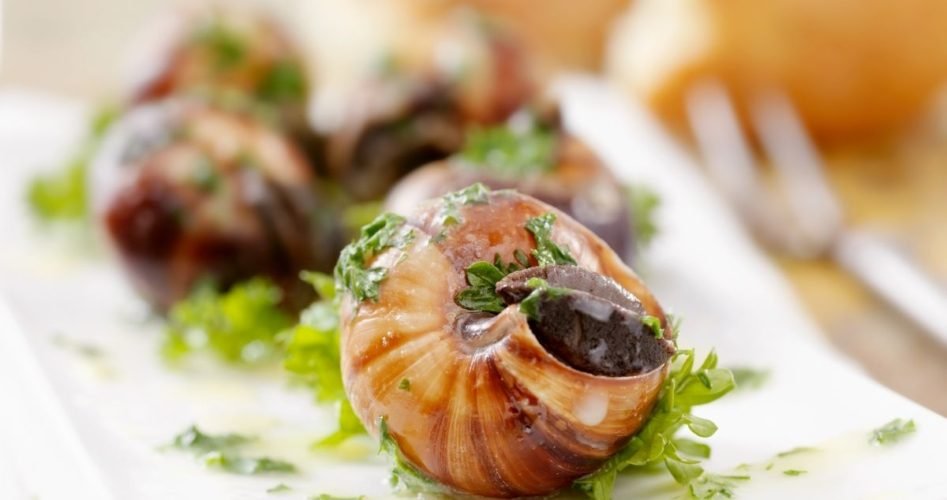French Food
Many cuisines in the Western world consider French food and cooking to be the backbone and underpinning world cuisine. Classic French cooking techniques have a legendary influence and recognition. This prestige is precisely why learning French cuisine can be scary for a novice.
French food is certainly renowned, whether you like snails in garlic sauce or not. Its mainstays have even inspired and transformed Western food into what it is now, from the simple crusty baguette to rich sauces, creamy gratins, and exquisite desserts. If you go to a restaurant, there’s a good chance you’ll find some French cuisine. The country is proud of its culinary contributions to the world, as it should be, with a history reaching back to the Middle Ages.
France’s Cuisine
The French cooking heritage began in the Middle Ages, when it was traditional for aristocracy to hold banquets. Back then, satisfying appetites with thick, luscious sauces and pies was just as important as impressing guests with the table decor. After all, food presentations were all the rage, and chefs would garnish their dishes with gold and silver leaves. They’d get so carried away that they’d sew a roasted swan back into its skin in a disgusting manner.
French Regional Delights
In most cases, the French cook and make regional dishes. This is in no way a provincial attitude; the French have a strong sense of terroir, which is why rural French cuisine is still alive and well in France. They are likely to try a wide variety of regional and national dishes in metropolitan France. This is true in many places around the world where the population is multicultural or ethnically diverse.
Local products play an important role in traditional French cuisine. Among the most regularly utilized products are fresh apples, berries, haricot verts, leeks, mushrooms, different squash, and stone fruits. These food items can be stored with the help of a Multifunctional Silicone Food Wrap. Poultry, beef, lamb, and veal are available all year; game meat is particularly popular and abundant during the hunting season, which runs from early October to early February. France offers a plethora of handmade cheese and wine, regardless of location.
The rich, nuanced flavours of mushrooms and duck, as well as the dramatic herbs, tomatoes, and olives derived from adjacent Mediterranean cuisines, are featured in Southern France. Northern France also offers a diverse range of flavours, with a strong emphasis on farmhouse dishes made with apples, dairy, pork, potatoes, sausage, and beer.
What Are Some Typical French Dishes?
There is no such thing as a “typical” French meal. Although the term “French cuisine” is frequently used to describe French food, most French meals are region-specific and hence vary depending on where you are. Breakfast foods are the only exception. While presenting the French Delicacies, cover your dining table with a Satin Tablecloth to complete the look.
The French frequently eat tartine for breakfast, which consists of a slice of bread, generally a baguette, slathered with a fruity jam. This is nearly often served with coffee, hot cocoa, or orange juice, and sometimes with yogurt and a croissant. On weekends, it’s typical to go to the bakery and pick up freshly baked viennoiserie, such as croissants, pain au chocolat (chocolate croissants), pain aux raisins, and other pastries.
Lunch menus differ by area. The length of the French meal, on the other hand, is a distinguishing feature. Lunches used to be like mini-dinners, spanning several hours and served with wine. Lunches in France are now shorter, but they are still leisurely sit-down affairs lasting around an hour. True, in some large cities, such as Paris, a few people may commit the heresy of devouring a sandwich too quickly. However, for the vast majority of French people, lunch is a highly cherished opportunity to take a break from work and socialize with co-workers and friends over a delicious meal.
A typical French dinner, once again, varies by location. A traditional French supper, on the other hand, has a fairly consistent format. Entrée (appetizer), plat (main course), fromage (cheese), and dessert are the four courses in a four-course meal. Occasionally, a salad course will be served after the main entrée. A Multifunctional Vegetable Cutter Slicer can assist you in chopping veggies quickly. If there is a choice between a fish and a meat meal, the fish will be served first. Serve finger-licking French dishes on Tableware Plate Design to give your guests a pleasing appearance.
Well-Known French dishes
Interested in trying some of France’s most well-known dishes? Then have a look at these popular French dishes. Here are a few more favourites you might want to try:
- Quiche — mainly a pastry filled with eggs and cream mixed with meat, cheese, veggies, or shellfish, quiche is the savoury relative of pie. You can make your own version by mixing in whichever hearty ingredients you like. Quiche Lorraine, which is prepared with bacon, is the most famous recipe.
- Gratin Dauphinois — is a baked potato dish from south-eastern France that is the crown jewel of the winter supper table. Make your own version by layering sliced potatoes, milk, and cream, then topping with breadcrumbs or grated cheese.
- Chocolate mousse — On any French dessert table, chocolate mousse is a must-have. It’s a silky, creamy combination of chocolate, eggs, and heavy cream.
Some Illustrious French Cuisine Dishes
The French love to eat out, so you’ll find bistros, pubs, streetside cafes, and restaurants just about everywhere. There are many classic foods in France, some of which you may be familiar with because they are popular all over the world. So read this post to learn about traditional French cuisine or to figure out what to order the next time you’re in France or in a French restaurant. And have pleasure in your food! or, as the French say, “Bon Apétit!”
Macarons
Let’s begin with a sweet treat! Macarons are buttercream-filled sweet cookies. Macarons are available in a variety of colours to distinguish the filling flavour, such as pink for raspberry, brown for chocolate, yellow for vanilla or lemon, green for pistachio, blue for blueberry, and many others.
Baguette
The loaf of French bread is long and thin. This traditional French bread is primarily baked with white wheat flour, but every French bakery (boulangerie) will offer a variety of baguettes to select from. Baguettes consisting of rye flour, spelled flour, or whole wheat flour are also available.
Cheese from France
The French have a reputation for being cheese connoisseurs. Many wonderful cow’s milk cheeses (‘Fromage de Vache) are available, as well as goat’s milk cheeses (‘Fromage de chevin’). Some of the most well-known cheeses include Camembert, Brie, and Roquefort (blue cheese), which are consumed all over the world.
Ratatouille
Ratatouille is a thick stew made with tomatoes, bell peppers, onions, garlic, courgettes, and aubergines (also called eggplants). It’s typically served as a vegetable stew, but there are meat-based versions.
French Tacos: A Popular Fast Food with a Mysterious Origin
Tacos, which resemble a burrito or a panini, are one of France’s most popular grab-and-go meals these days. A French taco, also known as a Lyon taco or matelas, is a fast food delicacy made of a grilled flour tortilla folded over a filling of French fries, cheese, and meat, among other deli ingredients. It began in the Rhone-Alpes area of France in the early 2000s, looking more like a burrito than a taco and claiming Mexican food as inspiration, before becoming popular among teenagers and young adults throughout France and worldwide.
Despite its name, the French tacos have little in common with tacos and are more akin to burritos, particularly the California burrito; it has also been compared to paninis and doner kebab sandwiches. A flour tortilla is wrapped or folded in a rectangular shape around a filling, which commonly consists of
- French Fries: The French Fries Maker will make your task a lot easier.
- Instead of cheese, any sort of French or cheddar cheese, processed cheese, particularly American cheese, or a cheese sauce can be added.
- mince, escalopes, chicken nuggets, doner kebab, cordon bleu, turkey lardons, and other sorts of meat, such as chicken, turkey, or beef;
- an extra relish, such as ketchup, mayonnaise, barbecue sauce, or other condiments commonly found at kebab shops;
- veggies, usually in salad mix form, but often in other forms such as shakshuka.
The sandwich is then warmed by grilling or roasting on a panini grill. There are other alternate recipes, and it is usual in French taco restaurants to sell made-to-order items by enabling customers to select from the ingredients listed above à la carte. There are also vegetarian options. In order to suit Muslim clients, most French tacos are sold as halal-certified, meaning they do not include pork.
The Surreal Ascent of French Delicacies
The cuisine of France is unique and well-known all over the world. French cuisine has a long and illustrious history replete with notable achievements. Their cooking techniques have influenced other cuisines and have been employed all across the world. Pastries, wine, baguettes, and all of the locally produced items are essential components of the cuisine. Many old French restaurants, which sometimes use banquet-style seating to bring diners together, nevertheless have a sense of community.
Discover more from Relax Around The World
Subscribe to get the latest posts sent to your email.







